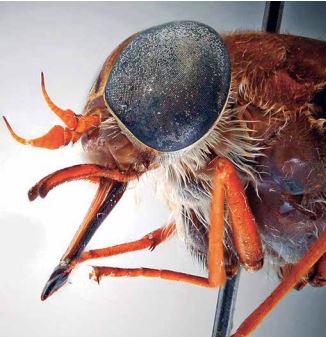Importance of the oral apparatus of insects in agriculture
Abstract
Insects are the most successful animal group on earth from any point of view: ecological, biological, biogeographic, among other aspects. The presence of wings and a chitinized exoskeleton, in addition to its small size and high reproductive rate, give it the highest probability of survival against any planetary catastrophe. The diversity of oral appliances found in this animal group indicates a long and refined process of evolution that has led to specialization in the use of various sources of food resources, ranging from very hard substrates (wood) to very soft. (plant or animal tissue).
This use is an adaptive advantage of insects that feed on all kinds of materials and substances. The specialization of each group, towards a source of nutrients, was adjusting the structures that make up the system with which they reach their food, to obtain from their substrate, prey or host, the energy necessary for their life cycle and colonize new areas, thus generating the great variability that we know today in the mouthparts of insects. So much of their activity and behavior are affected mainly by the need to feed, which is an important factor in determining the abundance of a species in its range.
In general, we can mention as main food source, for most insects, plants and all their parts (root, stem, leaf, flower, fruit) and substances (sap, nectar, pollen, resins, oils) . There are also those that feed on other insects and animals, blood, excrement, decomposing matter, and even inorganic materials (Lozano, 2005).
The way of eating represents an important issue for agriculture, since the damage to crops depends on it (OCWUS, 2017). In obtaining their food, insects generate an impact, and have certain characteristics such as shape, location, size, which are typical of each type of oral appliance. In this sense, the objective of this work is to describe the different mouthparts of insects and to highlight the importance of knowing this information due to its usefulness for agricultural purposes.
References
Bastidas, R. y Y. Zavala. 1995. Principios de la Entomología Agrícola: una guía para su estudio. Venezuela, Sol de Barro. Pp. 45-50.
Borror, DJ and DM. DeLong. 1970. An Introduction to the study of Insects. 3 Ed. Ohio, Estados Unidos de América, Holt Rineheart Wiston. Pp. 13-19.
Discover Life. 2017. Thysanoptera. Trips (en línea, sitio web). Consultado 04 dic. 2017. Disponible en http://www.discoverlife.org/mp/20q?search=Thysanoptera.
FCA (Facultad de Ciencias Agropecuarias). 2017a. Aparatos Bucales (en línea). Consultado 04 dic. 2017. Disponible en http://agro.unc.edu.ar/~zoologia/ARCHIVOS/APARATOS%20BUCALES.pdf.
FCA (Facultad de Ciencias Agropecuarias). 2017b. Morfología Interna (en línea). Consultado 04 dic. 2017. Disponible en http://agro.unc.edu.ar/~zoologia/ARCHIVOS/morfologia%20externa%202014-1.pdf. Lozano, J. 2005. Entomología: morfología y fisiología de los insectos (en línea). Palmira, Colombia. 220 p. Consultado 04 dic. 2017. Disponible en http://www.bdigital.unal.edu.co/39805/1/6366273.2014.pdf.
Martín, M y I. Mestre. 2017. Alimentación y adaptaciones de las piezas bucales de los insectos (en línea, sitio web). Consultado 04 dic. 2017. Disponible en https://www.bioscripts.net/zoowiki/temas/26D.html.
Metcalf, CL. and W.P. L0LFlint. 1939. Destructive and useful insects. 2 Ed. New York, Estados Unidos de América, McGraw-Hill. pp. 115-117.
OCWUS (Open Course Ware de la Universidad de Sevilla). 2017. Tema 2. Morfología externa de los insectos: Tipos de aparato bucal (en línea, sitio web). Consultado 04 dic. 2017. Disponible en http://ocwus.us.es/produccion-vegetal/sanidad-vegetal/tema_2/page_08.htm.


